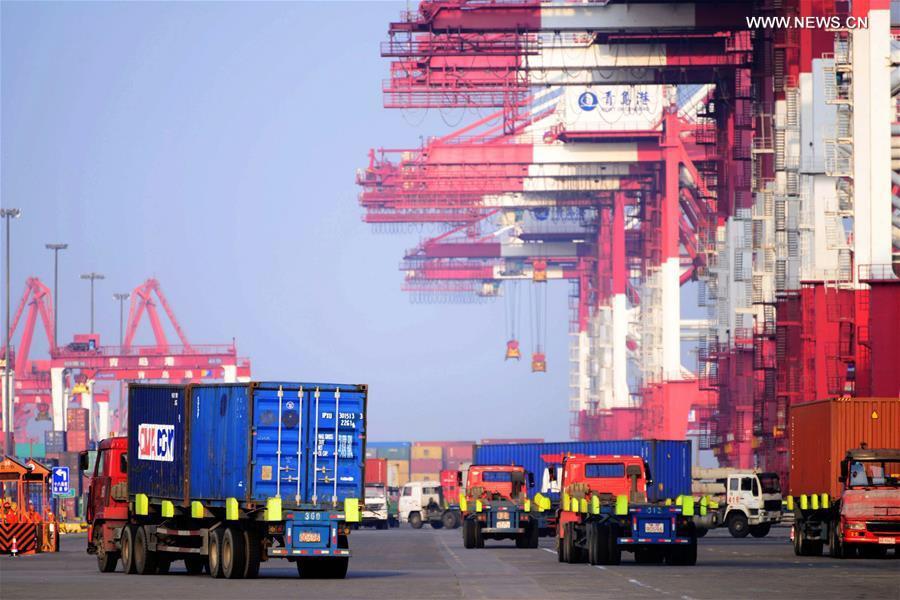BEIJING, Dec. 17 (Xinhua) -- Opening up has been among the major policy moves that underpinned China's stellar economic growth over the past decades, and even though protectionism is on the rise, the country has been steadily delivering its promise of opening its doors wider.
At a key economic conference earlier this month, China's policymakers said opening up will continue to develop on a larger scale and at a deeper level.
Foreign investment will be facilitated and better protected. The country will further shorten the negative list for foreign investment, lower the overall tariff level, and encourage enterprises to diversify export markets, said a statement released after the Central Economic Work Conference, which charted the course for economic work in 2020.
Covering a wider range of areas and deeper institutional reforms, the new round of opening up will help develop a new economic landscape for China and the world at large, analysts said.
-- MORE BALANCED OPENING UP
When China first opened up, the government conducted trials and experiments in coastal areas first and then expanded them to central and western regions several years later.
Over the past decade, however, China improved the balance in opening different areas and quickened its pace of opening the central and western regions.
China has unveiled 17 state-level new areas since 2010, including six in the east, five in the central and six in the west. The almost equal numbers showed the country's efforts to further opening up in all regions to promote balanced development.
In addition, pilot free trade zones (FTZs) in central and western regions outnumbered those in eastern areas.
In 2019 alone, China approved six pilot FTZs, bringing the total number to 18.
The six new FTZs are located in the landlocked province in Yunnan in the southwest; Heilongjiang, the northeastern province of China's old industrial bases; the southern Guangxi Zhuang Autonomous Region; and the coastal provinces of Shandong, Jiangsu and Hebei.
Guangxi, Heilongjiang and Yunnan have relatively small economic sizes among provincial-level regions, whereas Jiangsu and Shandong are more prosperous.
"It is clear that the government wants to seek greater synergy of opening up among different parts of the country," said Bai Ming, an expert with a research institute affiliated to China's Commerce Ministry.
-- MORE INSTITUTIONAL OPENING UP
Different from the basic opening up of commodity factors and market, China now aims to establish a new round of opening up featuring institutional and systemic openness.
China has taken solid steps to push for institutional opening up including implementing the pre-establishment national treatment, shortening the negative list for foreign investment, and protecting intellectual property rights.
"China is entering a new stage of institutional and rule-based opening up, which is more advanced compared with the opening up of the market," said Zhang Monan, a research fellow of the China Center for International Economic Exchanges.
A top priority of developing a higher-level open economy is to create a market system that is in line with international rules, regulations, management and standards.
A landmark foreign investment law and a regulation on optimizing the business environment will come into effect at the start of 2020, which provide the legal bedrock for facilitating foreign investors' access to the Chinese market.
"Further institutional opening up will present significant business opportunities for foreign companies and investors," Zhang said.
"More opening-up measures are in the pipeline" as the country is determined to open its economy wider, Bai noted.




 A single purchase
A single purchase









